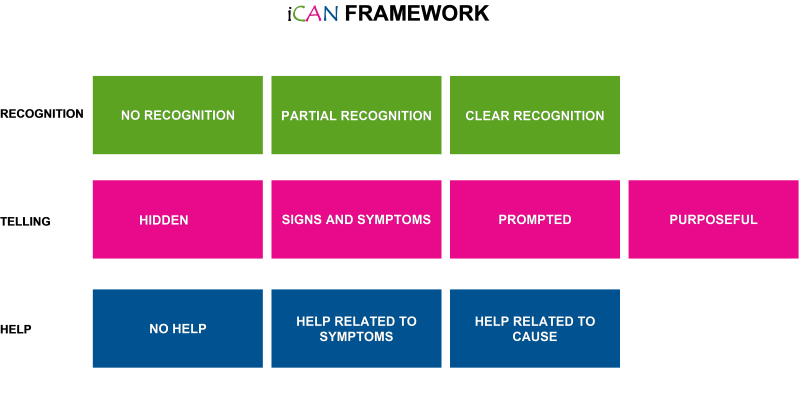Children's Journeys
A linear version of the framework is shown below, and can help you to understand a particular child you are concerned about. Using the framework to think about where the child is in relation to recognition, telling and help can help you to focus on the child's perspective.

It is rarely the case that a child clearly recognises the abusive situation, seeks out someone purposefully to tell and receives help, following the right hand side of the above framework. More commonly, children come to the attention of staff through their own behaviour, attendance or appearance at school (signs and symptoms), taking a middle path through the framework.
Children can remain hidden for long periods because they do not recognise the problems and it is so difficult to talk about them.
Some children experience multiple problems over long periods. If children and young people have previous experience of support, within or outside of school, which did not change their situation or which they did not find helpful, they will be less likely to tell in future. They will also be less likely to think that their problems are worth bothering with and count as abusive.
However, where children do experience effective help, they are less likely to blame themselves and more likely to turn to adults for help in the future. The framework allows you to think about the child's experiences across their childhood and adolescence and understand how the help you offer can make a real difference.
Pathways through the framework
The short clips below are drawn from the research and demonstrate pathways of individual children. We have changed the names.

)